How to Make the Ultimate Bacon Mac and Cheese
You can’t go wrong with this deliciously decadent dish.
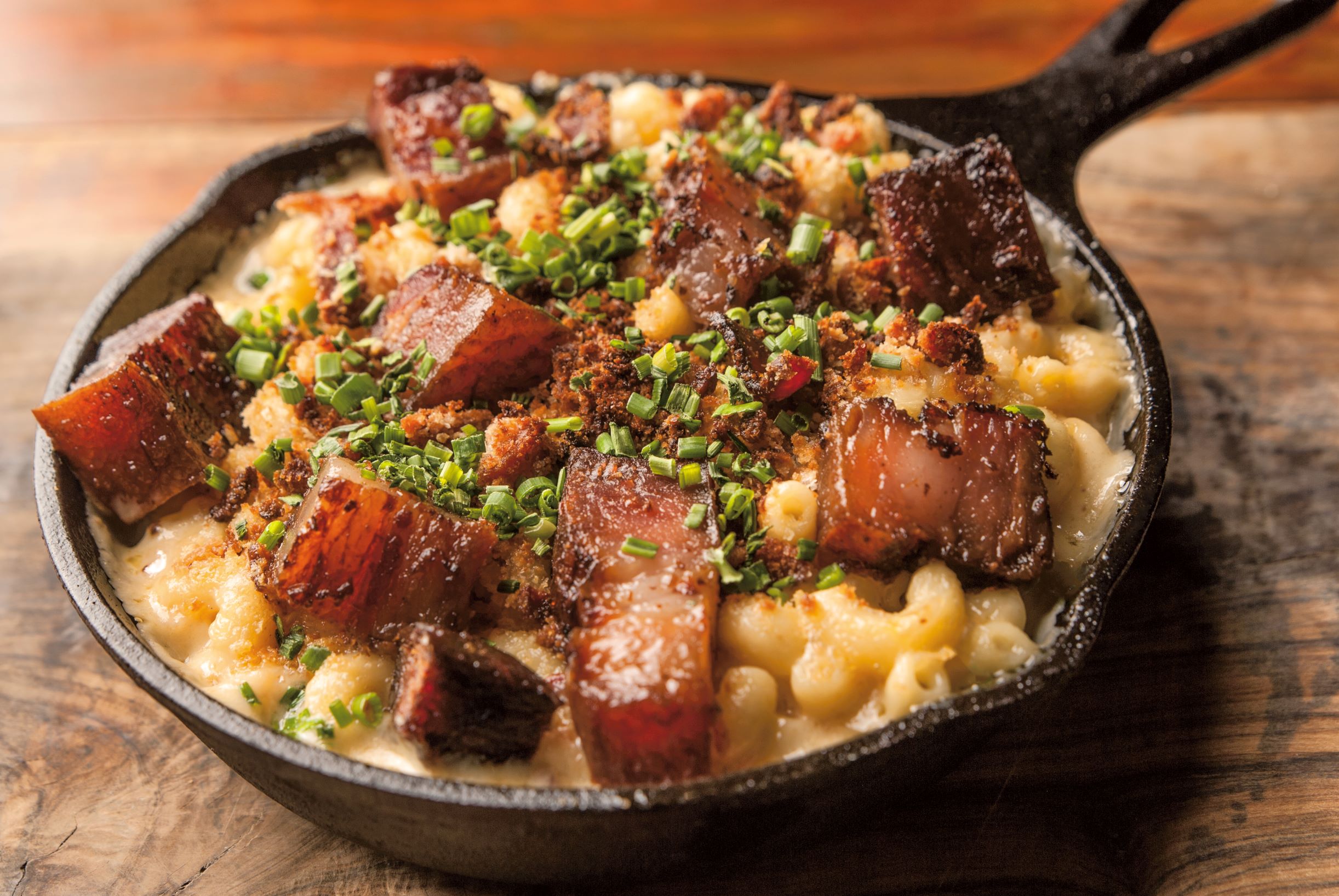
Peter Sherman is the owner of BarBacon, a bacon-themed gastrobpub in New York City, and author of “The Bacon Bible,” a cookbook with over 200 recipes that highlight the delicious porcine ingredient. Here’s how to make Sherman’s ultimate bacon mac and cheese.
I couldn’t imagine opening a bar without mac and cheese on the menu, and I couldn’t imagine making a mac and cheese without bacon.
This recipe gets a triple dose of bacon, starting with the sauce and ending with the bread crumbs, proving yet again that too much of something (um, bacon, that is) is never enough.
https://www.instagram.com/p/Bl_QUvOgYHj
It calls for bacon lardons, which is just a fancy way to say slab bacon that is sliced into matchsticks. Lardons were originally used to add fat and richness to lean cuts of meat before roasting or braising. Besides mac and cheese, they are excellent in salads, the most classic being the frisée-lardon, and to add flavor and texture to frittatas, soups, and braises.
The lardons in the restaurant are cut from Confit bacon that is cooked to pulling temperature and falls apart like pulled pork and blends seamlessly into the pasta.
The result is a big blast of bacon—not just bacon for the sake of adding bacon, but a bacon mac and cheese, through and through.
Here’s how to make it:
For the Bacon Lardons:
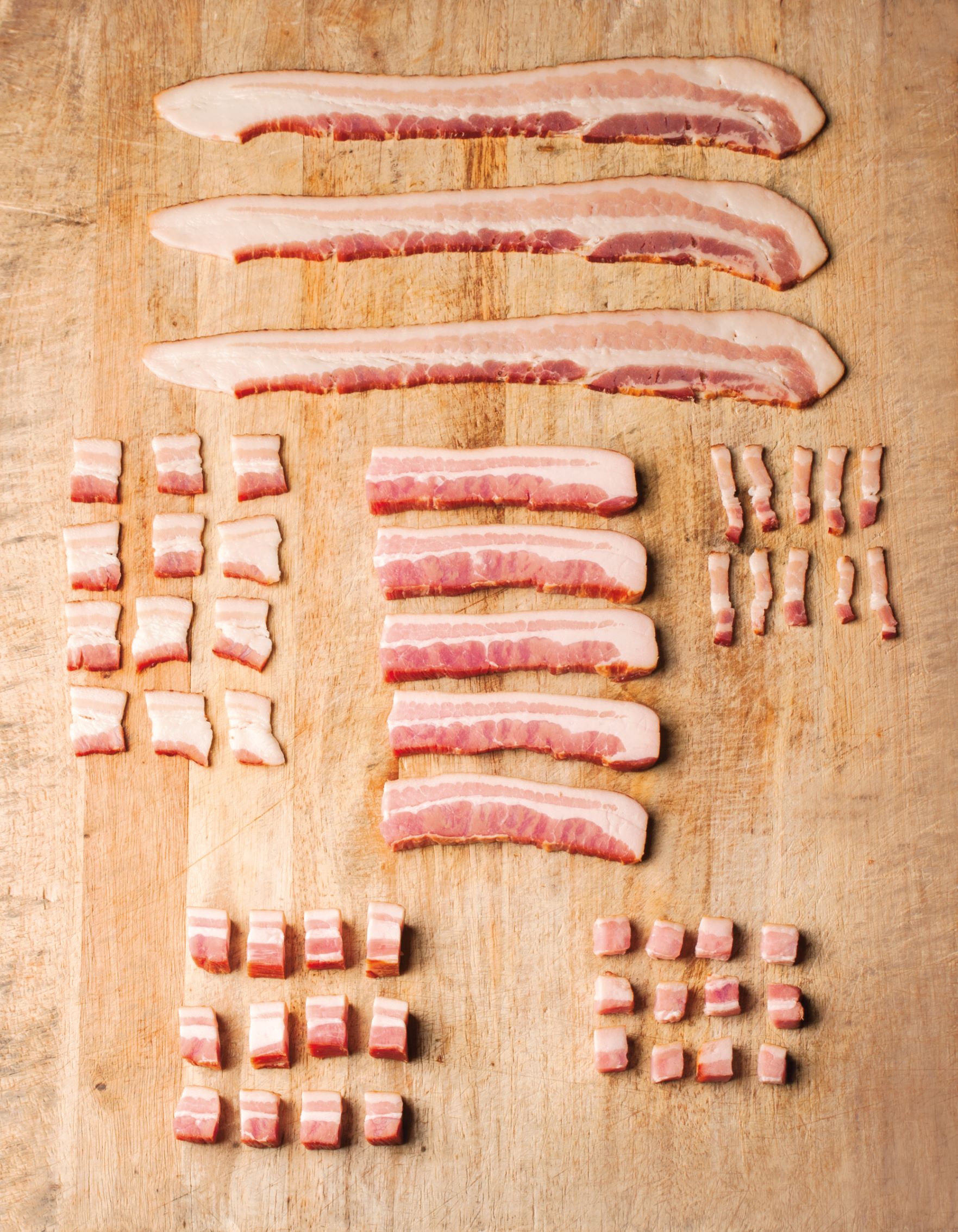
Appropriately enough, this process is called larding. Because they are more fat than meat, lardons are slightly chewier than cooked sliced bacon
- 1 tablespoon canola oil
- 4 slices thick-cut bacon, cut crosswise into strips ¼ inch (6 mm) thick by 1 inch (2. 5 cm) long
In a large sauté pan over medium heat, combine the oil and bacon and cook, turning a few times, until the bacon is golden brown and crispy and the fat has rendered, about 8 minutes.
Remove the bacon using a slotted spoon to a plate lined with paper towels. Pour ¼ cup plus 2 tablespoons (90 ml) of the fat into a small bowl and set aside for making the bread crumbs. Save the rest for another use (see below*).
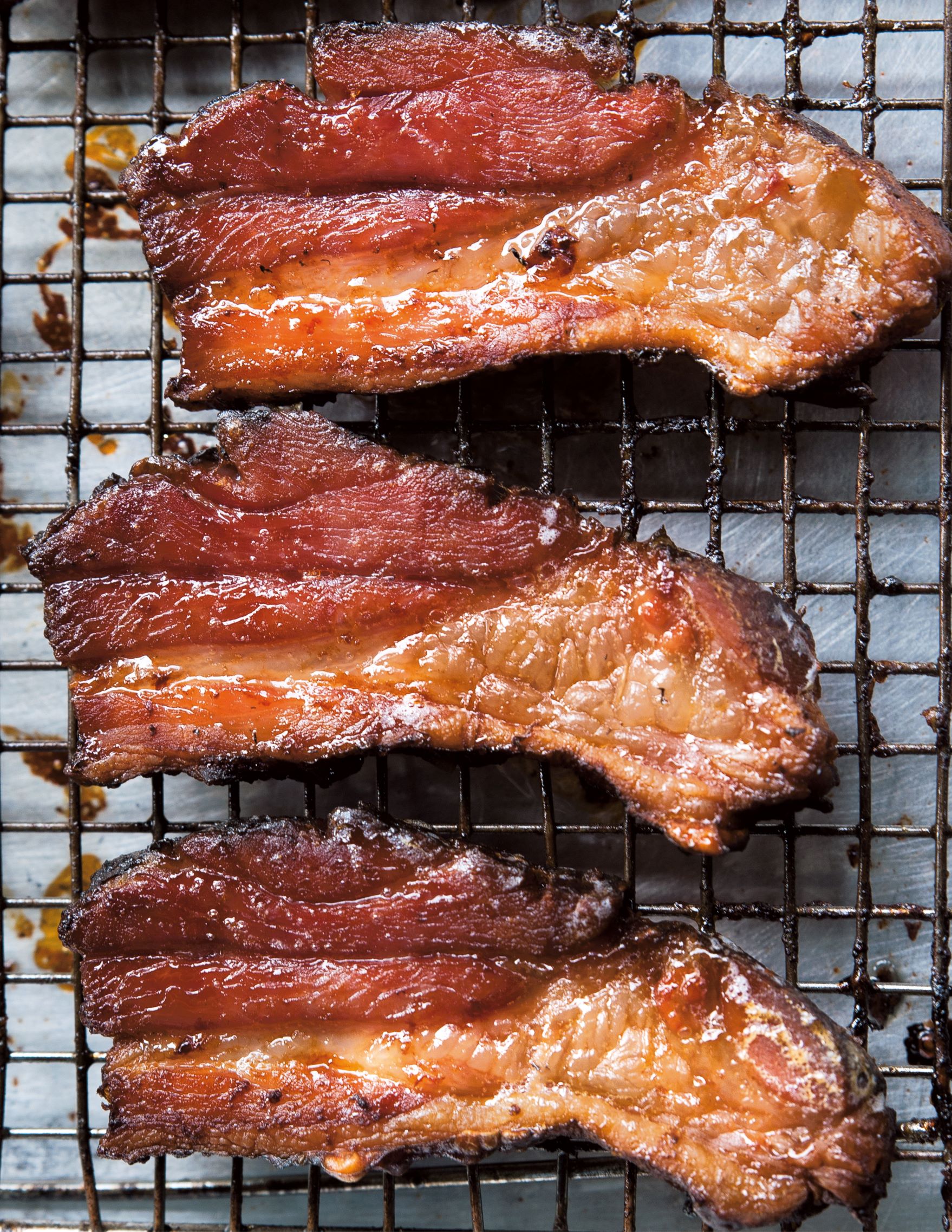
For the Bread Crumbs:
With the bread crumbs we use your classic strip bacon and chop it up. I like having a crunchy element in my mac and cheese, but I didn’t want it to change the creaminess and smoothness I savor in a great mac and cheese.
- 1 tablespoon canola oil
- Bacon lardons
- ¼ cup (60 ml) rendered bacon fat (reserved from the lardons as mentioned above)
- 1 tablespoon unsalted butter
- 1 cup (80 g) panko bread crumbs
Heat the reserved bacon fat and the butter in a small sauté pan over high heat until it begins to shimmer. Add the panko and cook, stirring occasionally, until golden brown and crispy, about 5 minutes. Transfer to a plate.
For the Macaroni and Cheese:
https://www.instagram.com/p/BdgfRojhOdy
- 1 quart (960 ml) whole milk
- 2 tablespoons rendered bacon fat, reserved from the lardons
- 2 tablespoons unsalted butter
- ¼ cup (30 g) all-purpose flour
- 2 cups (225 g) shredded American cheese
- 2 cups (225 g) shredded smoked gouda
- Kosher salt and freshly ground black pepper
- 1 pound (455 g) dried elbow macaroni, cooked in salted water until al dente and drained
- ¼ cup (11 g) finely chopped fresh chives
Preheat the oven to 375°F (193°C). Butter a 9 by 13-inch (23 by 33-cm) baking dish or a 12-inch (30.5-cm) cast-iron pan.
In a large pot, bring the milk to a simmer over low heat.
Combine the remaining 2 tablespoons of bacon fat and the butter in a medium saucepan over high heat until it begins to simmer. Add the flour and cook, stirring constantly, for 1 minute. Slowly add the warm milk, whisking until smooth.
Lower the heat and cook the béchamel sauce until thickened and the flour taste has cooked out, about 7 minutes.
Remove from the heat, add both cheeses, and whisk until smooth. Taste for seasoning, adding salt, if needed, and a good dose of black pepper.
In a large bowl, stir the cheese sauce into the cooked pasta, fold in the bacon, and transfer to the prepared baking dish or pan. Bake until bubbly and lightly golden brown on top, about 20 minutes. Remove from the oven and sprinkle with the bread crumbs and chives. Serve immediately.
Serves 6 to 8.
How to Properly Render and Store Fat
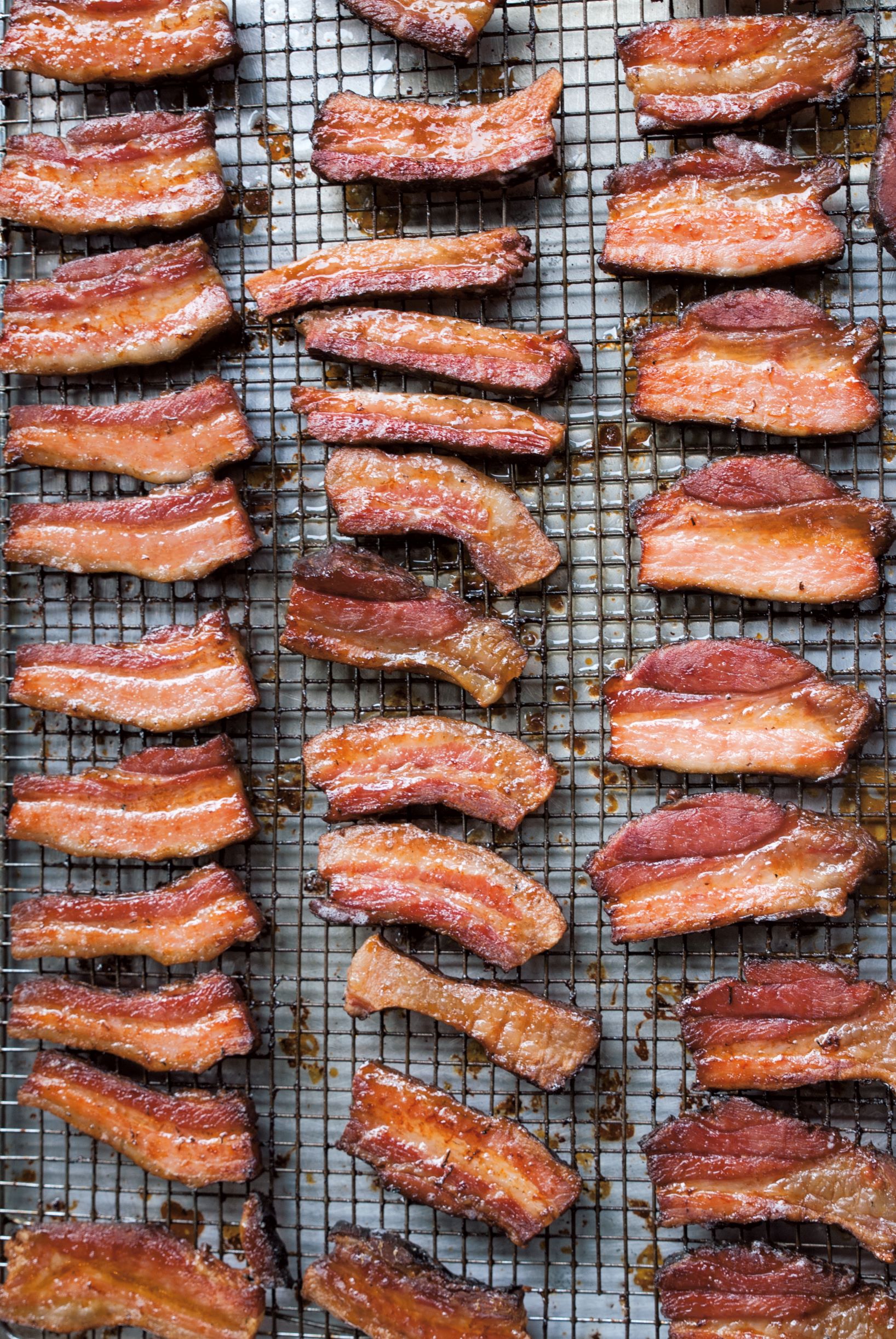
When it comes to adding flavor and richness to your cooking, flakiness to your baking (think biscuits, tortillas, and piecrust), and smokiness and mouthfeel to your liquor and cream, there’s nothing better than bacon fat.
And guess what? If you are really going to cook from this book (and I hope that you are), you are going to have lots of rendered fat to store in your refrigerator. You’ll be getting the fat from thin slices of bacon, thick slices, lardons, and chopped pieces.
There is, however, a way to render fat from bacon just for the sake of rendering the fat. But before you pull out that skillet or sheet pan, here are a few rules to follow to get the most fat out of that bacon and store it properly for future use.
Chop your bacon—slab if possible, but chopped thick-sliced bacon works too—into
small dice. The goal is to expose as much of the surface area of the bacon as you can to get more fat out using lower heat. This prevents the bacon or fat from cooking too quickly and burning.
Add a few teaspoons of neutral oil (I like canola) to the pan to get it going, then fry slowly over medium heat in a heavy skillet (cast iron, if possible), stirring occasionally to keep the pieces from sticking. The bacon is done when it’s golden brown and has shrunk about 50 percent in volume and the pan has a nice thick layer of grease in it.
Remove the pieces of bacon using a slotted spoon and drain them on a layer of paper towels until you’re ready to use. You can use immediately as a garnish for baked potatoes, salads, popcorn, or ice cream, or store in plastic bags in the freezer for future use.
Strain the fat through a fine-mesh sieve into your “grease jar.” Don’t use plastic— if the fat is still hot, it could melt the container; plastic can also impart a flavor to the stored grease. I use a pint-size glass jar with a wide mouth. The wide opening is convenient for spooning out dollops of fat.
Note: As the bacon cooks, it will inevitably leave behind bits and pieces of meat. You don’t want those in your bacon grease, because when you cook with it later, they’ll burn and impart a bitter flavor to your food.
Removing the solids by straining the fat means it’ll last for just about forever in your fridge.
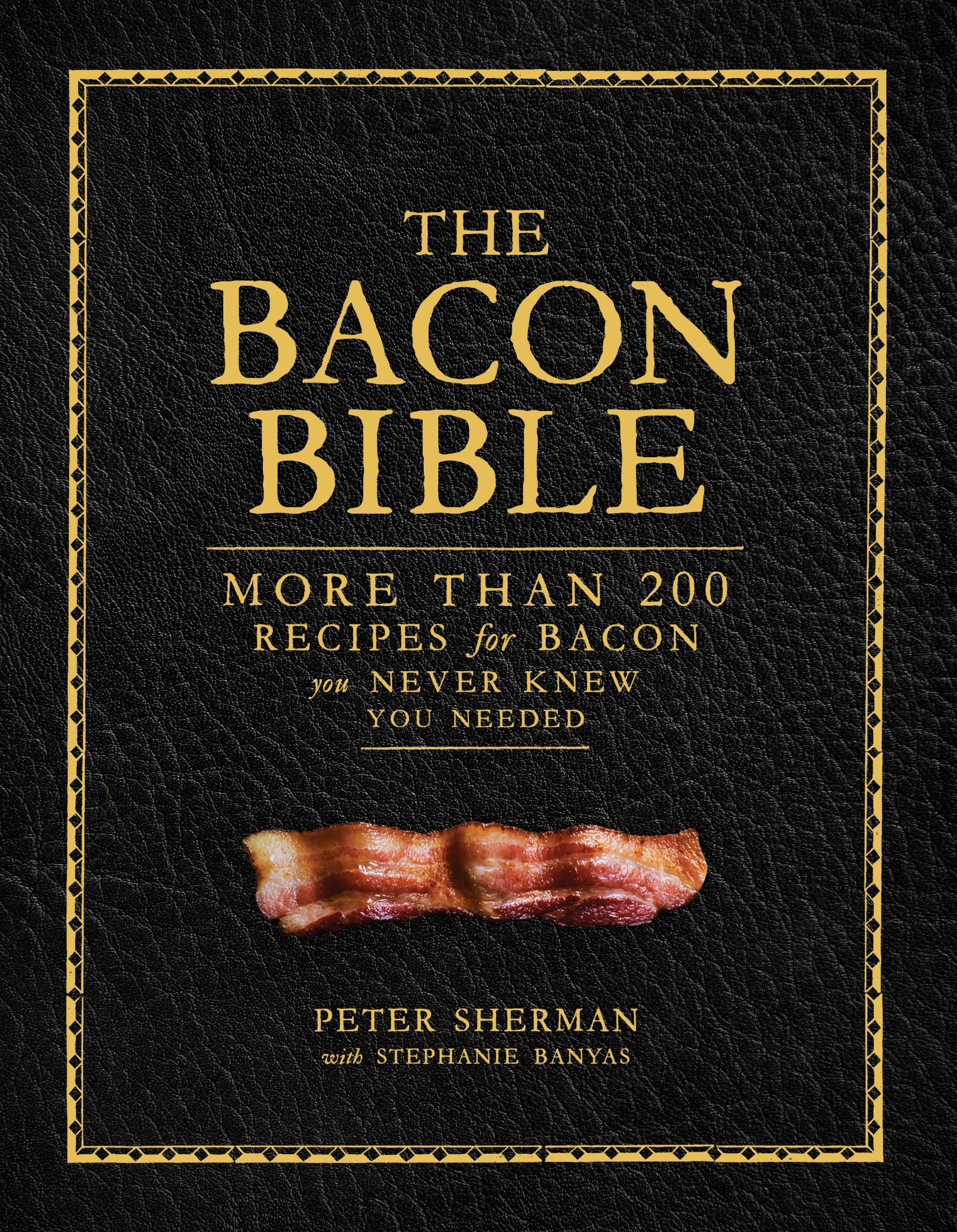
The Bacon Bible by Peter Sherman with Stephanie Banyas is available now.






